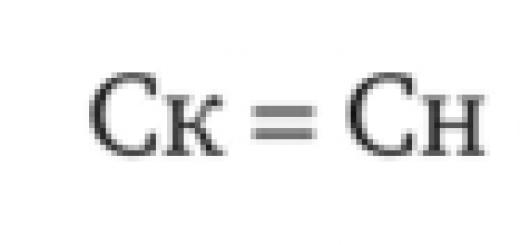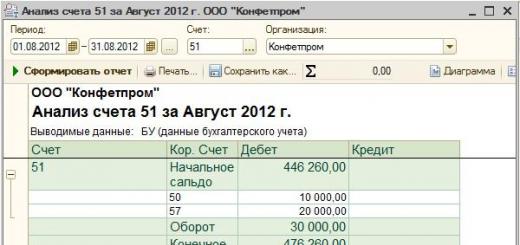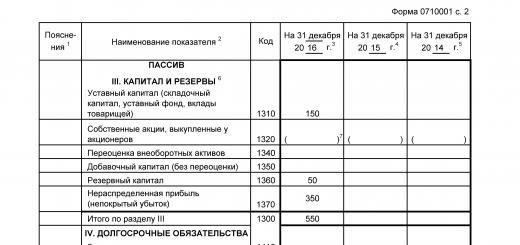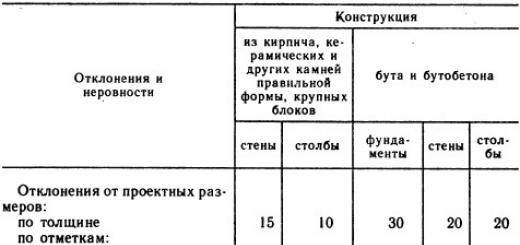Latest news: March 13, 2018 became known living wage in Moscow in 2017 for the 4th quarter of 2017. We tell you how much its official value is for various groups of the population and how this will affect the social sphere.
New sizes
The official living wage in Moscow for the 4th quarter of 2017 was approved by the Decree of the Moscow Government dated March 13, 2018 No. 176-PP.
If you wish, you can familiarize yourself with this document of the Moscow Government on the living wage of 2017 for the last 4th quarter.
Thus, the minimum living wage in Moscow in 2017 for the 4th quarter for various population groups was:
- the basic cost of living in Moscow per capita in 2017 (Q4) - 15,397 rubles;
- approved living wage able-bodied population Moscow 2017 (Q4) - 17,560 rubles;
- the official living wage for a pensioner in Moscow in 2017 (Q4) is 10,929 rubles;
- the subsistence minimum for a child in Moscow in 2017 (Q4) is 13,300 rubles.
What changed
Note that the cost of living per person in Moscow in 2017 for the 4th quarter increased by 305 rubles. This is compared to the last quarter of 2016.
But the subsistence minimum jumped most noticeably in Moscow in 2017 for the 4th quarter for able-bodied residents. It has become more by 341 rubles than in 2016.
If we talk about other categories, then the subsistence minimum in Moscow for 2017 for the 4th quarter also increased for them. So, a pensioner needs 214 rubles more, and children - 311 rubles more than in 2016.
As such, the revision of the subsistence minimum in Moscow takes place every quarter. Its traditional growth means that life becomes more difficult (not cheaper), and the state has to spend more on social sphere to support underprivileged sections of the population.
Why is a living wage needed?
It is extremely important to know what the cost of living in Moscow for 2017 for the 4th quarter. After all, this is not just an abstract economic value, but a real assessment of the so-called consumer basket. The law includes the following items:
- non-grocery goods;
- mandatory payments and fees to the budget.
As a result, the official living wage in Moscow in 2017 signals what benefits the needy categories of residents will receive. Namely, it is taken into account when calculating:
- additional allowance for the birth of children;
- monthly allowances for children;
- one-time financial assistance to people who find themselves in a difficult life situation.
Also, the average cost of living in Moscow in 2017 depends on:
- student's right to a social scholarship;
- registration for the amendment of living conditions;
- provision of free legal support;
- calculation of subsidies for payment of housing and communal services.
Please note that Moscow takes the living wage for subsidies for 2017 not in the fourth, but in the second quarter of 2017. The figure for the first quarter of 2018 is not yet clear.
In accordance with the Law of the city of Moscow dated May 15, 2002 N 23 "On the subsistence level in the city of Moscow", the Moscow Government decides:
1. Set the subsistence minimum in the city of Moscow for the III quarter of 2017:
Per capita - 16,160 rubles;
For the able-bodied population - 18,453 rubles;
For pensioners - 11,420 rubles;
For children - 13,938 rubles.
2. Establish that before establishing the subsistence minimum in the city of Moscow for the fourth quarter of 2017, in order to make social payments, the appointment (provision) of which takes into account the subsistence minimum in the city of Moscow, and (or) social payments, the amount of which depends on the subsistence minimum in the city of Moscow, determining the terms of payment for the provision of social services, the provision of free legal assistance within the framework of state system free legal aid in the city of Moscow, the subsistence minimum in the city of Moscow for the II quarter of 2017 is applied.
3. Control over the implementation of this resolution shall be entrusted to the Deputy Mayor of Moscow in the Moscow Government for Social Development Pechatnikov L.M.
| Mayor of Moscow | S.S. Sobyanin |
Document overview
In the third quarter of 2017, the subsistence minimum decreased and amounted to 16,160 rubles per capita. (it was 16426 rubles), for the able-bodied population - 18453 rubles. (instead of 18,742 rubles), for pensioners - 11,420 rubles. (previously - 11603 rubles), for children - 13938 rubles. (it was 14252 rubles).
The living wage is used to assess the standard of living of the population of Moscow in the development and implementation of the city's social programs, for the purposes of state social payments, drafting the capital's budget, developing and implementing social protection measures for citizens.
In connection with the decrease in the subsistence minimum, the size of the minimum wages established in the amount in force in the II quarter.
The living wage is valuation consumer basket, which characterizes the minimum set of goods and services necessary in order to maintain human health and ensure its vital activity. This indicator serves as a state guarantee that citizens of the Russian Federation will receive minimum cash income and other social protection measures. It can be defined per capita and for the main socio-demographic groups of the population - able-bodied, pensioners and children. Since it is the size of the subsistence minimum that determines the standard of living of the population, it can somehow affect every citizen of the country. In the proposed article you will find answers to typical questions about this indicator - why is it needed, who sets it, in what time frame and what does it affect, and also where can you always find the current subsistence level and in what documents?
For the first time, the subsistence minimum for the whole of the Russian Federation was established on January 1, 1998. It was introduced as a cost equivalent, which was intended to justify the value of the minimum "size" of wages - the so-called minimum wage. Article 2 federal law No. 134-FZ of October 24, 1997 "On the subsistence minimum in the Russian Federation" with the help of the subsistence minimum in Russia as a whole at the federal level:
- the standard of living of the population of Russia is assessed in the course of the development and implementation of social federal programs;
- justifies the minimum “size” of wages established at the federal level;
- the sizes established at the federal level, scholarships and other social payments are determined;
- formed the federal budget.
You should know that the cost of living is not at all some kind of abstraction. On the contrary, this is an important indicator, based on which citizens can be and receive the right to benefits and.
When is a family or single person considered poor?
In particular, the size of the living wage is important for people who can be recognized as poor. This is the most socially unprotected category of citizens, which can receive additional benefits from the state. A citizen or a family is considered if the income of each family member or single person is less than the subsistence level, which is established in this subject Russian Federation. Such a family has the right to receive state social assistance. The procedure for its provision is established by federal as well as regional laws and, above all, No. 178-FZ “On State Social Assistance”.
Living wage in 2017
In accordance with Decree of the Government of Russia No. 730 of June 20, 2017 “On the establishment of the subsistence minimum per capita and for the main socio-demographic groups of the population as a whole in the Russian Federation for the 1st quarter of 2017”, this minimum for a Russian in the first quarter amounted to 9909 rubles. Compared to the fourth quarter of 2016, the indicator increased by 208 rubles, which is explained by inflation.
 Decree of the Government of the Russian Federation of June 20, 2017 No. 730 “On the establishment of the subsistence minimum per capita and for the main socio-demographic groups of the population as a whole in the Russian Federation for the 1st quarter of 2017.”
Decree of the Government of the Russian Federation of June 20, 2017 No. 730 “On the establishment of the subsistence minimum per capita and for the main socio-demographic groups of the population as a whole in the Russian Federation for the 1st quarter of 2017.” The amount of 9909 rubles is the average for the country and varies for individual groups of the population. So, for able-bodied citizens, the subsistence minimum is set at 10,701 rubles, for pensioners - 8,178, and for children - 9,756 rubles.
Compared with the fourth quarter of 2016, for pensioners and the working-age population, the subsistence minimum increased by 2.2%, for children - by 3.4%. At the same time, inflation officially recognized by Rosstat in the first quarter of this year amounted to 1.2%. In January-March, food prices rose by 1.7%, and the prices for fruits and vegetables jumped the most. Thus, the price of onions increased by 13.3%, potatoes - by 11.4%, carrots - by 6.7%, cabbage - by 3.6%, beets - by 1.8%.
Prices for dairy products increased: butter by 8.6%, cheese - by 4.2%, sour-milk products - 3.1%, sour cream - 2.7%, milk - 2.4%. Bread and bakery products made from wheat flour went up in price by 1.8%, rye and rye-wheat bread - by 0.7%.
At the same time, prices for some cereals slightly decreased: from 0.7% for semolina to 5.8% for millet. The cost of meat and fish products has not changed much. With this in mind, food products as part of the subsistence minimum per capita increased by 2.3%.
Are your monthly incomes higher than the subsistence level (9909 rubles)?
Poll Options are limited because JavaScript is disabled in your browser.
By whom and when is the living wage set?
The subsistence minimum per capita and for individual groups both in Russia as a whole and in the regions is determined based on the consumer basket and information from the State Statistics Committee on consumer prices for goods and services, as well as the costs of mandatory fees and payments. The average indicators for the country are determined by the Decree of the Government of the Russian Federation in accordance with the federal law “On the Living Wage in the Russian Federation”, and the regional ones are determined by the executive authorities of the regions of Russia. At all levels, this indicator is determined quarterly by the 30th day of the month following the end of the quarter. This means January 30th, April 30th, July 30th and October 30th.
 Consumer basket in accordance with the Federal Law of December 3, 2012 N 227-FZ “On the consumer basket as a whole in the Russian Federation”
Consumer basket in accordance with the Federal Law of December 3, 2012 N 227-FZ “On the consumer basket as a whole in the Russian Federation” Where can I find out the current living wage?
In the country as a whole, data on the subsistence minimum are quarterly published in the publications of the Government of the Russian Federation and on its official website. According to the regions of the Russian Federation, they are published by the official publications of the executive authorities of the constituent entities.

Also, this information will be provided to you in the social security authorities - social security, in the offices of the State Statistics Committee of the regions and in the office of the deputy head of the regional administration in charge social issues. With these data, each citizen will be able to determine what kind of social assistance and in what amount he can receive from the state.
Is it possible to “live” on a living wage?
From 07/01/2017 and the regional "minimum wage" we talked about the size of the minimum wage in ours. We will talk about the relationship between the minimum wage and the subsistence minimum, as well as the value of the latter for the 2nd quarter of 2017, in our consultation.
What is a living wage?
The living wage is the cost estimate of the consumer basket, as well as mandatory payments and fees (Article 1 of the Federal Law of October 24, 1997 No. 134-FZ). The consumer basket includes the minimum set of food products necessary for human life and health, as well as non-food products and services.
Minimum wage = living wage?
The Labor Code of the Russian Federation establishes that the size of the minimum wage cannot be lower than the subsistence level of the able-bodied population (part 1 of article 133 of the Labor Code of the Russian Federation). The living wage for the working-age population as a whole in the Russian Federation for the 1st quarter of 2017 is 10,701 rubles (Decree of the Government of the Russian Federation of 06/20/2017 No. 730). But the current minimum wage of 7,800 rubles, even after its increase (Federal Law No. 460-FZ of December 19, 2016), falls short of the subsistence level. This discrepancy is explained by the fact that it is planned to increase the minimum wage to the subsistence level in stages. The procedure and terms for this increase must be established by the Federal Law (Article 421 of the Labor Code of the Russian Federation). But such a federal law has not yet been adopted. Therefore, the prospect of bringing the minimum wage and the subsistence minimum into line is still rather vague, and the contradiction that has arisen in connection with the requirements of Part 1 of Art. 133 of the Labor Code of the Russian Federation to economic realities is still insoluble.
As for the compliance of the regional minimum wage with the subsistence minimum of a constituent entity of the Russian Federation, the Labor Code of the Russian Federation provides that the “minimum wage” is set taking into account socio-economic conditions and the subsistence minimum of the able-bodied population in the corresponding constituent entity of the Russian Federation. This means that there is no strict rule “regional minimum wage = regional subsistence minimum”. However, regional agreements may provide that the minimum wage is set at the subsistence level. So, for example, in clause 3.1.1 of the Moscow tripartite agreement on the minimum wage, it is indicated that the “minimum wage” is reviewed quarterly and is set in the amount of the subsistence minimum for the able-bodied population of the city of Moscow. At the same time, the new minimum wage comes into force on the 1st day of the month following the month of entry into force of the resolution of the Government of Moscow, which established the subsistence minimum (clause 3.1.2 of the Agreement). Moreover, if the cost of living decreases, the minimum wage will not change. So, for example, the living wage for the working-age population in Moscow in the first quarter of 2017 amounted to 17,642 rubles (Decree of the Government of Moscow dated June 13, 2017 No. 355-PP). This Decree came into force on 06/25/2017. Therefore, the minimum wage in Moscow from 07/01/2017 is also set at 17,642 rubles.
When and by whom is the living wage set?
In general, the subsistence minimum per capita and for the main socio-demographic groups, both in the country as a whole and in the constituent entities of the Russian Federation, is calculated quarterly based on the consumer basket and Rosstat data. The latter provides the following information to determine the subsistence minimum (clause 1, article 4 of the Federal Law of October 24, 1997 No. 134-FZ):
- the level of consumer prices for food products;
- consumer price indices for food, non-food products and services;
- indexes of expenditures on obligatory payments and fees.
The federal subsistence minimum is established by the Government of the Russian Federation, and the regional one is established in the manner established by the relevant subject of the Russian Federation (clause 2, article 4 of the Federal Law of October 24, 1997 No. 134-FZ).
Given that it takes time to obtain and process statistical data, the subsistence minimum is not approved immediately after the end of the quarter. At the time of preparation of the material, the subsistence minimum for the 2nd quarter of 2017 had not yet been published. The experience of past years shows that the federal subsistence minimum for the 2nd quarter is not ready until August, and, for example, in 2013 it was only calculated in October.










